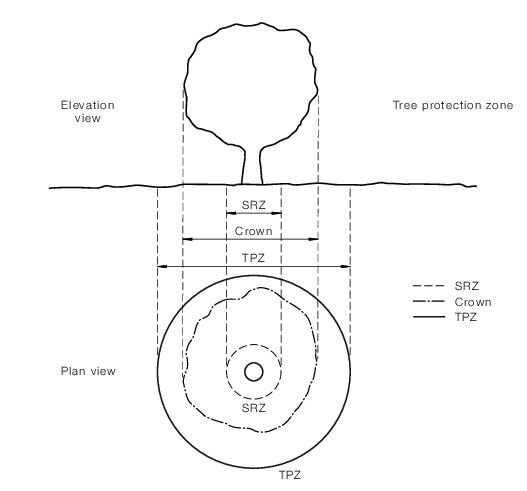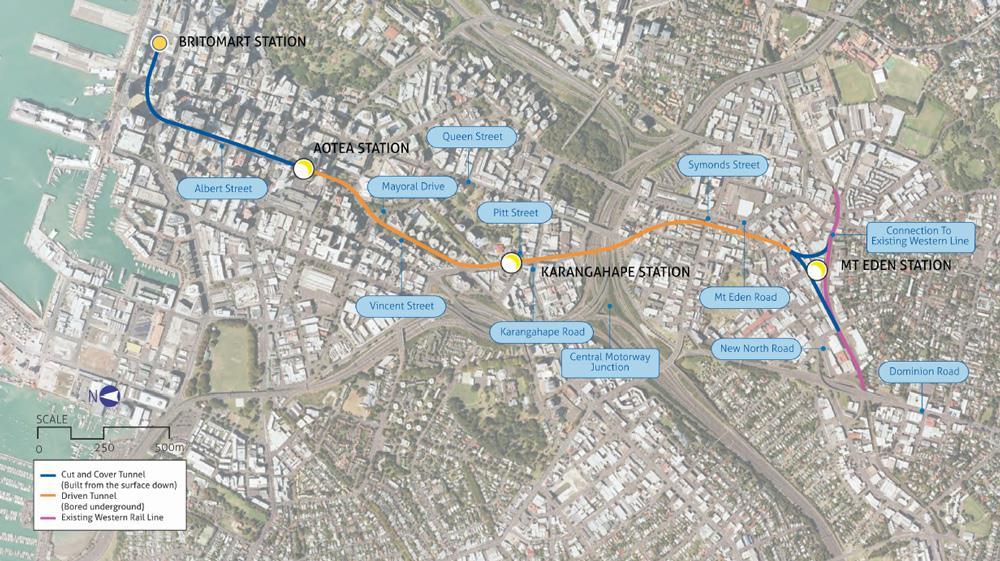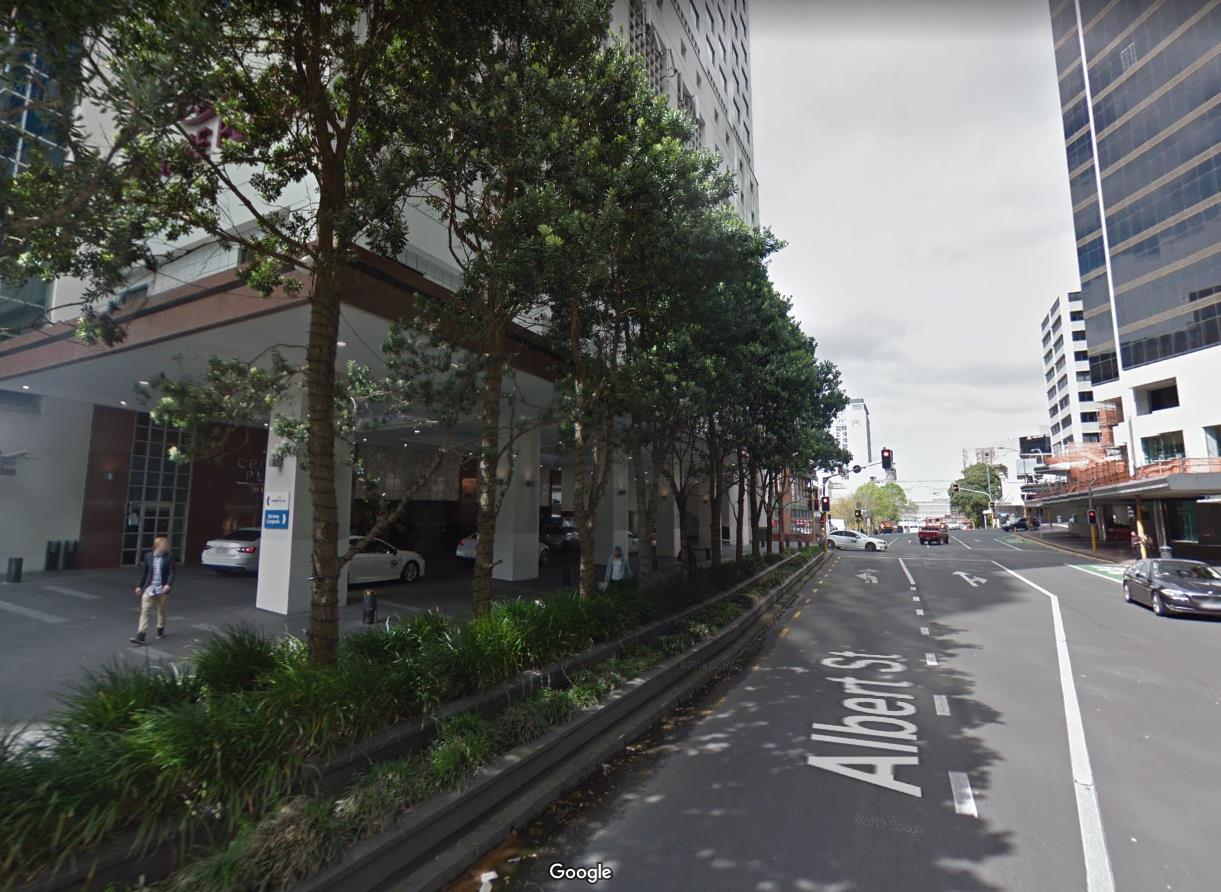
8 minute read
4. Mitigation Measures
support, either in a temporary location or as part of a permanent solution. Extensive under and above ground support would be required, which would be difficult to install and safely maintain in a public realm environment.”
As it has been concluded that the 11 pōhutukawa trees are unable to be transplanted, they will be replaced as part of public realm reinstatement works in accordance with designation condition 55.3(c).
As identified above, the Aotea main works will affect the 11 pōhutukawa trees on Albert Street. In order to mitigate the effects of tree removal on the local streetscape and prevent further loss or damage to impacted trees, the following mitigation measures will be implemented during the works.
CRLL and the Link Alliance are maintaining a Tree Register for the entire CRL project which, for the purposes of the current TV DWP, includes a record of all trees removed as a result of the Aotea Station construction works.
4.1 Trees Requiring Removal / Relocation
As outlined in Section 3.1, the 11 pōhutukawa trees will require removal during the Aotea main works. This work will be undertaken by a suitably qualified and experienced arborist.
4.1.1. Transplanting Trees
If transplantation of the trees were deemed to be feasible, this would be undertaken in a manner that allows them to be replanted within the designation area following the completion of main construction works or at another suitable location to be determined in consultation with Auckland Council’s Senior Advisor Urban Forest.
Tree relocation methodologies generally follow a set process and shall be informed by the Project Arborist. This process should consider the following:
Timing of works –removal should ideally occur outside of active growth stages, after flowering or before flower budding, if practicable. Temporary storage site –this will need to be identified prior to removing the trees. The site must have a hardstand area large enough to house the trees, with a water connection; and be in or near the CBD to allow easy transport. Preparation –prior to being dug out, the trees may need to be pruned and selected branches tied back to protect them during the relocation process, foliage may also need to be sprayed with anti-transpiration prior to works. A trench will need to be dug around the root balls, the dimensions of which will be at the discretion of the arborist, and outer roots trimmed as required. The trench will need to be deep and wide enough to allow the root balls to be undercut at a 45-degree to allow its extraction. Transport –the root balls will need to be covered in damp hessian/burlap to keep as much of the root balls and soil intact during transport. The trees will need to be removed using a digger or small crane and transported, in an upright position, using a flatbed truck. Storage –the trees will need to be transferred to temporary planter boxes large enough to contain the root ball and support the tree during storage. The planter should be kept in a cool, shaded place and the roots kept moist until it can be replanted. Aged mulch and high fungal compost will be added to the planter.
Page 12
Aotea Station Main Works
Replanting –once the relocation site has been identified, replanting will need to be
undertaken within a similar window in which the tree is ‘dormant’. The replanting locations
and aftercare maintenance should be included in the replanting plans prepared as part the Urban Design DWP 4 .
It has been assessed that these trees cannot be relocated, therefore, they will need to be replaced in accordance with the criteria described in Section 4.1.2.
4.1.2. Permanent Removal and Replacement
It has been assessed by the Project Arborist (refer Appendix C), that the 11 affected pōhutukawa trees will require removal (as opposed to relocation) prior to the commencement of the Aotea main works.
The method for removal of these trees will be informed by a qualified arborist in accordance with site observations, such as the proximity of surrounding buildings, tree size and overall condition, and expert knowledge. The methodologies used may include the following:
Staged removal whereby the outer limbs are removed first, followed by inner limbs and the main trunk. As the trees are within planters it will be investigated whether all the tree roots are contained within the planters, therefore, avoiding underground services. Removed tree debris will either be mulched onsite or removed for mulching off-site, depending on which is more practicable.
The Link Alliance will ensure that Council’s Senior Advisor Urban Forest is made aware of any tree felling, including being kept informed of the proposed time and date of tree felling before it takes place.
All trees permanently removed as part of the Aotea main works will need to be replaced to address adverse effects on amenity and the local streetscape. If the future public realm reinstatement design allows, replacement trees for those removed from Albert Street will be planted within the same or a nearby area, as part of the site’s reinstatement. If this is not possible, replacement trees will be planted in an appropriate location elsewhere within the CRL designation. The location of replacement trees will be included in a replanting plan prepared as part the Urban Design DWP for the Aotea Station public realm reinstatement. The Urban Design DWP will be prepared in the future (approx. late 2021 / early 2022) and replanting plans will consider the following in accordance with designation Condition 55.3(c):
Replanting of removed trees at a ratio of at least 1:1. The species and characteristics of replacement trees will be determined following input from Auckland Council’s Senior Advisor Urban Forest. Design for re-instatement of Albert Street, including opportunities to replace removed trees with appropriate native species. Document input from the Auckland Council with regard to tree species / vegetation selection, tree pit construction and positioning of replacement trees.
4 Relates to Reinstatement of the Albert Street public realm (streetscape). This will occur on completion of the main construction works, confirmed through a sperate OPW. This separate OPW package will address relevant Urban Design related Designation conditions (Condition 47 –54). Page 13 | Aotea Station Main Works
An outline of the maintenance periods and responsibilities for care of the trees (i.e. maintenance is to be undertaken by the Requiring Authority for a period of five years for specimen trees and 3 years for all other landscape planting). Any consultation undertaken in relation to the replacement planting (refer to Section 5 of this TV DWP).
4.2 Trees not Requiring Removal
As outlined in the TV DWP Aotea Utility Relocation Works - Stages 4 and 5, two trees in close proximity to the CSA (Mayoral Drive) will be retained in situ during the CSA site establishment works (these trees identified as T51 and T52, refer Figure 4-1 below). During the Aotea main works, construction works will continue to occur in close proximity to these trees; there is therefore potential for these trees to be impacted as a result of large vehicle movements and other construction activities.
Figure 4-1: Tulip Trees T51 and T52 to be protected during the Aotea main works.
4.2.1. Tree Protection Zones and Crown Protection
Tree Protections Zones around any remaining trees shall be established around each tree to ensure the trunks, roots, canopy and branches are protected during the Aotea main works.
The Tree Protection Zone encompasses the root and crown area of the tree that would need to remain isolated from construction disturbance to maintain tree health. The height of the Protection Zone is dictated by the height of the tree and the width (or radius) around the tree is typically calculated by multiplying the tree’s diameter at breast height (DBH) by 12 (AS 4970-2009):
Tree Protection Zone = DBH x 12
The Tree Protection Zone will not be less than 2m nor greater than 15m, except where crown protection is required.
If a tree is multi-stemmed at 1.4m above the ground (refer to Figure 4-2) the Australian Standard (AS4970-2009) indicates that in this situation the following equation should be used to determine the DBH, which would then feed into the equation above to calculate the Tree Protection Zone:
Page 14
Aotea Station Main Works

Figure 4-2: Tree forks below 1.4m where the arborist would measure DBH (AS4970-2009).
The information needed for this calculation has not been collected within the original arboricultural assessment of trees (Boffa Miskell, 2012), therefore, a site visit will be completed to obtain the measurements needed to determine the Tree Protection Zone.
Crown protection will also be required to ensure that the trees do not receive injury from machinery such as excavators, drilling rigs, cranes, trucks and hoarding installation. Crown protection will be located 1m outside of the perimeter of the crown, which may be within the Tree Protection Zone.
Page 15
Aotea Station Main Works

Figure 4-3: Indicative Tree Protection Zone (AS4970-2009).
The following activities will not be permitted in the Tree Protection Zones:
Mechanical excavation on the road, footpath or any public space. Stockpiling of building materials, debris or soil. Vehicular traffic except on existing paved surfaces. Installation of service pits or hatches. Vehicular crossings. Severing of tree roots with a diameter greater than 30mm. Alteration of soil levels and structure.
The Link Alliance will coordinate a site walk over between Auckland Council’s Aotea Station Environmental Advisor, the Project Arborist, contractors undertaking the works and site compliance officer, to ensure all protection measures are in place for trees requiring protection.
Ongoing monitoring will be undertaking by the Aotea Station Environmental Advisor to ensure the trees that are located outside of the area of works are being monitored and where necessary, protected for the duration of the site work. Any issues raised will be directed to the Link Alliance Project Arborist, whom will ensure correct mitigation measures are implemented.
Page 16
Aotea Station Main Works






